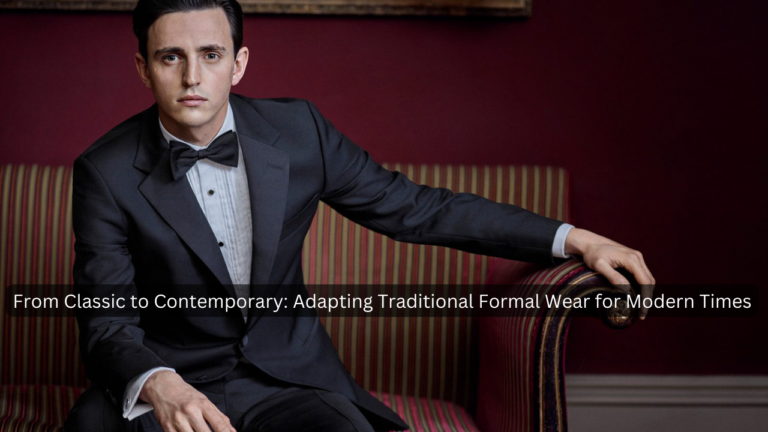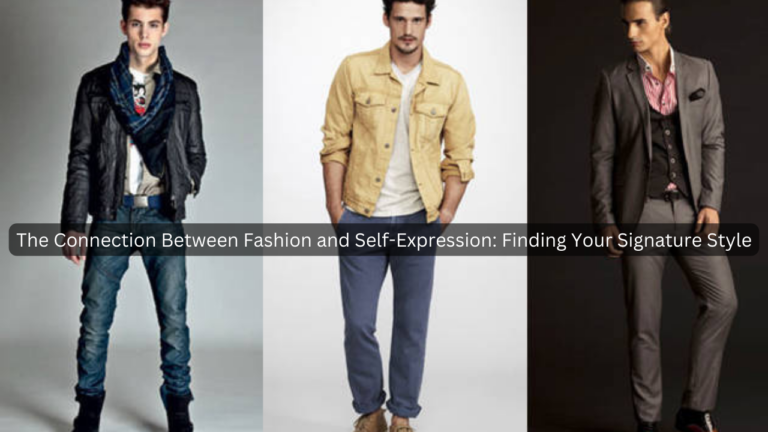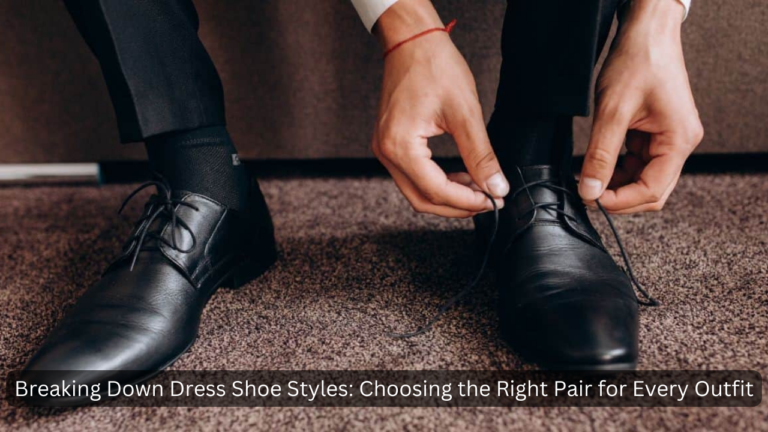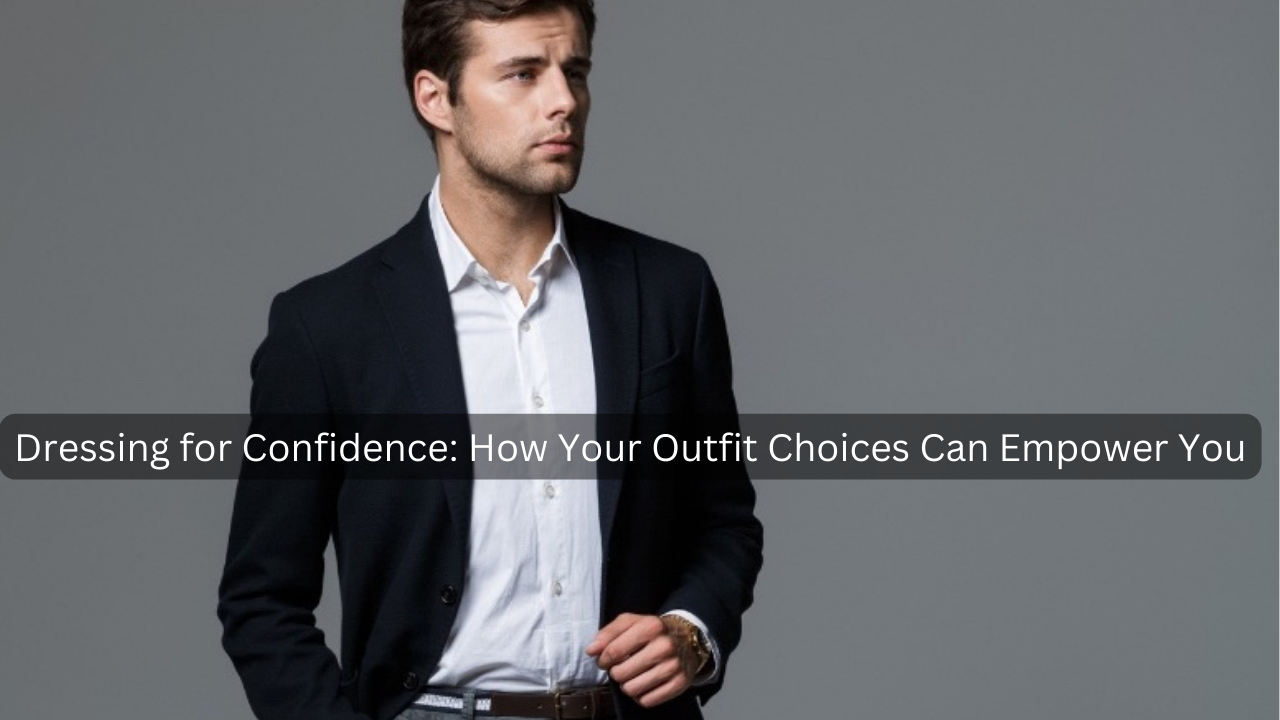
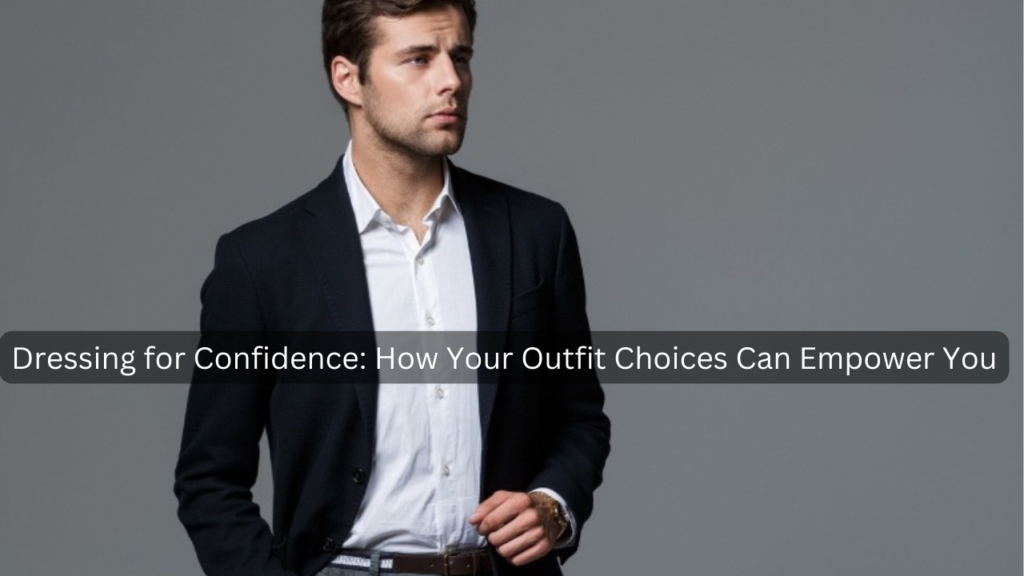
Table of Contents
Introduction
Clothing is more than just fabric draped on our bodies; it’s a powerful form of expression that influences how we perceive ourselves and how others perceive us. Beyond mere aesthetics, our clothing choices can significantly impact our mood, behavior, and even our level of confidence. The way we dress reflects not only our personal style but also our attitudes, aspirations, and cultural affiliations. In today’s world, where first impressions often shape our interactions, understanding the relationship between clothing and confidence is crucial.
Importance of Clothing Beyond Mere Aesthetics
The significance of clothing extends far beyond looking good. It serves as a non-verbal communication tool, allowing us to convey messages about our personality, professionalism, and self-esteem. Studies have shown that what we wear can affect our cognitive processes, influencing our thoughts and even our performance in various tasks. Whether consciously or subconsciously, our outfit choices play a pivotal role in shaping our self-image and how we navigate social and professional environments.
Thesis Statement: How Dressing Well Impacts Confidence and Empowerment
The way we dress not only affects how others perceive us but also how we perceive ourselves. Dressing well goes beyond simply wearing fashionable attire; it involves choosing clothing that aligns with our personal style, fits well, and makes us feel comfortable and empowered. When we dress in a manner that resonates with our identity and aspirations, it can boost our confidence levels, enhance our self-esteem, and empower us to tackle challenges with a sense of assurance and poise. This article explores the transformative power of dressing well, illustrating how conscious wardrobe choices can lead to greater confidence and empowerment in various aspects of life.
Understanding the Psychology of Clothing
Clothing is not merely a matter of covering the body; it serves as a powerful tool that influences our psychology and behavior. The psychology of clothing explores how what we wear impacts our thoughts, feelings, and interactions with others. From boosting self-confidence to conveying social status and cultural identity, our clothing choices reflect and shape various aspects of our psychological well-being.
The Concept of Enclothed Cognition
Enclothed cognition refers to the idea that clothing not only affects the way others perceive us but also influences our own thoughts and behaviors. This concept suggests that our cognitive processes are influenced by the symbolic meaning and physical experience of wearing certain clothes. For example, wearing formal attire might evoke feelings of professionalism and competence, while casual clothing could promote a more relaxed mindset. The phenomenon of enclothed cognition highlights the intricate relationship between our attire and our cognitive functions.
Psychological Studies on the Effects of Clothing on Behavior and Mindset
Numerous studies have delved into the effects of clothing on behavior and mindset, providing empirical evidence for the impact of attire on various psychological dimensions. Research has shown that wearing clothing associated with authority or competence can enhance cognitive performance and increase confidence in both social and professional settings. Additionally, studies on color psychology have revealed how different hues can influence mood and emotional responses, further underscoring the psychological influence of clothing choices.
Understanding these psychological mechanisms can empower individuals to strategically use clothing as a tool for enhancing self-perception, influencing interpersonal interactions, and fostering positive psychological outcomes.
The Link Between Dressing Well and Confidence
Dressing well isn’t just about looking good; it’s about feeling good too. When we dress in clothes that fit well, suit the occasion, and align with our personal style, it can significantly enhance our confidence levels. This boost in confidence stems from several factors, including the positive feedback we receive from others, the sense of competence and professionalism associated with appropriate attire, and the alignment of our outward appearance with our inner self-image.
How Dressing Well Affects Self-Perception
Our clothing choices play a crucial role in shaping how we perceive ourselves. When we dress well, we tend to feel more capable, competent, and ready to take on challenges. This phenomenon is rooted in “self-perception theory,” which suggests that we infer our own attitudes and traits based on our behaviors, such as the way we dress. By consciously choosing clothing that makes us feel empowered and confident, we reinforce positive self-perceptions and cultivate a stronger sense of self-esteem.
Case Studies or Anecdotes Illustrating the Impact of Attire on Confidence Levels
Real-life examples vividly demonstrate the transformative power of dressing well on confidence levels. Consider individuals who, after upgrading their wardrobe or wearing a particular outfit, reported feeling more assertive and self-assured in professional meetings or social gatherings. For instance, professionals in fields like sales or public speaking often emphasize the importance of dressing professionally to command respect and enhance their persuasive abilities.
Anecdotes can also highlight personal journeys where individuals overcame self-doubt or imposter syndrome by embracing clothing that reflected their true identity and aspirations. These stories underscore how attire serves not just as a covering but as a catalyst for personal empowerment and confidence-building.
These sections can provide a compelling narrative that explores the profound impact of dressing well on confidence and self-perception. If you have specific examples or cases in mind, they can further enrich your article’s depth and relatability
Dressing for Success: Professional and Social Contexts
The Role of Attire in Professional Settings
In professional environments such as job interviews, meetings, and daily work interactions, attire plays a crucial role in shaping perceptions and influencing outcomes. First impressions are often formed within seconds, and what we wear can convey professionalism, competence, and attention to detail. Dressing appropriately for the workplace not only demonstrates respect for the organization’s culture but also instills confidence in our abilities.
Job Interviews: Dressing for a job interview requires careful consideration of the company’s dress code and industry norms. Choosing attire that is neat, well-fitted, and conservative (unless otherwise specified) helps create a positive first impression. It signals to interviewers that you are serious about the opportunity and have respect for the professional setting.
Meetings and Presentations: In meetings or when presenting to colleagues or clients, dressing professionally reinforces your credibility and authority. A polished appearance can enhance your confidence and convey competence, potentially influencing how your ideas are received and valued.
Social Contexts and the Importance of Dressing Appropriately
Social gatherings, parties, and networking events provide opportunities to connect with others and build relationships. How we dress in these contexts can signal our social identity, confidence, and respect for the occasion.
Parties and Social Gatherings: Dressing for Confidence for social events varies depending on the nature and formality of the occasion. Whether it’s a casual get-together or a formal dinner, choosing attire that aligns with the event’s dress code enhances comfort and confidence, allowing you to focus on engaging with others.
Networking Events: Networking requires making memorable impressions and forging connections. Dressing in attire that balances professionalism with personal style can help break the ice and facilitate meaningful interactions. It demonstrates your attention to detail and respect for the networking opportunity, potentially opening doors to new relationships and opportunities.
In both professional and social contexts, understanding the nuances of dress codes and selecting appropriate attire not only enhances your outward appearance but also boosts your confidence and effectiveness in achieving your goals.
These sections can provide a comprehensive overview of how dressing appropriately contributes to success in both professional and social spheres. If you have specific scenarios or additional aspects you’d like to explore, feel free to let me know!
Expressing Individuality Through Clothing
Clothing serves as a powerful canvas for expressing our personality, values, and unique sense of style. Whether consciously or subconsciously, the way we dress communicates aspects of our identity to the world around us. From color choices to garment styles, each element of our wardrobe contributes to crafting a visual narrative that reflects who we are and how we want to be perceived.
Using Fashion to Express Personality and Individual Style
Fashion is more than just trends; it’s a form of self-expression that allows individuals to showcase their creativity and identity. Here’s how:
Color and Patterns: Choosing colors and patterns that resonate with personal preferences and cultural influences can evoke specific emotions and convey aspects of one’s personality. For example, bold colors might signify confidence and vitality, while subtle patterns could reflect a preference for elegance and sophistication.
Garment Selection: The types of clothing we wear—from tailored suits to casual attire—speak volumes about our lifestyle, interests, and values. Each garment becomes a deliberate choice to align with our self-perception and desired image.
Accessories and Details: Accessories such as jewelry, shoes, and bags provide additional opportunities for self-expression. They can add flair to an outfit and serve as symbolic representations of personal stories or achievements.
How Personal Expression Through Clothing Boosts Self-Assurance
When individuals dress in a manner that authentically reflects their personality and values, it fosters a sense of self-assurance and empowerment:
Authenticity: Dressing for Confidence in alignment with one’s true self promotes authenticity, which enhances self-esteem and confidence. It allows individuals to present themselves authentically to the world, fostering genuine connections and interactions.
Positive Self-Image: Choosing clothing that makes one feel comfortable and empowered contributes to a positive self-image. When individuals feel good about their appearance, they are more likely to approach challenges with resilience and optimism.
Empowerment: The act of selecting and wearing clothing that embodies personal identity empowers individuals to assert their individuality and assert their presence in various social and professional settings.
By embracing fashion as a means of self-expression, individuals can cultivate a stronger sense of self-awareness and confidence, ultimately enriching their personal and professional lives.
Practical Tips for Dressing to Boost Confidence
Choosing Clothes that Fit Well and Flatter Your Body Type
Know Your Body Shape: Understanding your body shape (e.g., pear, apple, hourglass) helps in selecting clothes that accentuate your best features and minimize areas you may be less confident about.
Tailoring: Invest in tailoring to ensure clothes fit properly. Well-fitted clothing enhances comfort and projects a polished appearance, boosting confidence.
Proportions and Silhouettes: Choose silhouettes that complement your body proportions. For example, high-waisted pants can elongate the legs, while A-line dresses can create a balanced silhouette.
The Significance of Grooming and Accessorizing
Grooming: Maintain good personal hygiene and grooming habits. Well-kept hair, nails, and skin contribute to an overall polished look, enhancing confidence.
Accessories: Select accessories that add personality to your outfit. Whether it’s a statement necklace, elegant watch, or stylish belt, accessories can elevate your look and reflect your personal style.
Quick Tips for Various Occasions
Formal Events:
Opt for classic pieces like a well-fitted suit or elegant evening gown.
Choose colors and fabrics that align with the event’s formality.
Pay attention to details like shoes and handbags that complement your attire.
Casual Outings:
Embrace casual chic with well-fitted jeans or skirts paired with stylish tops.
Incorporate comfortable yet fashionable footwear
Experiment with layers and textures to add depth to your outfit.
Workplace:
Follow the company’s dress code while injecting your personal style.
Aim for a professional yet approachable look that enhances your credibility.
Invest in versatile pieces that can be mixed and matched for different workdays.
By applying these practical tips, you can enhance your confidence through intentional wardrobe choices that align with your personal style and comfort. Dressing for Confidence well not only boosts your outward appearance but also empowers you to navigate various occasions with assurance and poise.
Overcoming Fashion Fears and Building Wardrobe Confidence
Addressing Common Fashion Insecurities
Fashion insecurities can stem from various concerns, such as body image, uncertainty about current trends, or fear of standing out. Here are some ways to address these insecurities:
Body Image: Focus on clothing styles that flatter your body type and make you feel comfortable. Embrace colors and patterns that you love and enhance your confidence.
Trend Anxiety: Rather than chasing trends, prioritize timeless pieces that align with your personal style. Build a wardrobe based on classic staples that you can mix and match effortlessly.
Fear of Standing Out: Experiment gradually with new styles or colors that intrigue you. Start by incorporating small changes into your wardrobe and gradually expand your comfort zone.
Steps to Building a Wardrobe That Makes You Feel Empowered
Building a wardrobe that boosts confidence involves thoughtful planning and self-awareness. Here’s how to get started:
Assess Your Style Preferences: Identify styles, colors, and fabrics that resonate with your personality and lifestyle. Consider creating a style mood board or seeking inspiration from fashion influencers who align with your taste.
Invest in Quality Basics: Start with foundational pieces such as well-fitted jeans, versatile blazers, and classic shirts or blouses. Quality basics form the backbone of a versatile wardrobe.
Mix and Match: Build a wardrobe that offers versatility and adaptability. Choose pieces that can be easily mixed and matched to create multiple outfits for various occasions.
Personalize with Accessories: Accessories like scarves, belts, and jewelry can add flair and personality to your outfits. Experiment with different accessories to enhance your look and express your individuality.
Seek Tailoring: Tailoring ensures that your clothes fit well and flatter your silhouette. Whether it’s adjusting hemlines or altering waistlines, tailoring can transform how an outfit sits on your body, boosting your confidence.
By addressing fashion fears and strategically building a wardrobe that aligns with your personal style and comfort, you can cultivate wardrobe confidence. Embrace your unique preferences and celebrate your individuality through intentional clothing choices that empower you in every aspect of life.
Conclusion
In conclusion, the connection between dressing well and confidence is profound and multifaceted. Our clothing choices serve as more than just a reflection of personal style; they embody our attitudes, aspirations, and how we wish to be perceived by others. By dressing thoughtfully and authentically, we not only enhance our outward appearance but also cultivate a deeper sense of self-assurance and empowerment.
Throughout this exploration, we’ve discovered that dressing well impacts confidence in several ways. It influences our self-perception, enhances our mood, and communicates messages about our professionalism and identity. Studies and anecdotes alike underscore the transformative power of wearing clothes that fit well, flatter our body type, and align with our personal style preferences.
As you navigate your own journey of self-expression through fashion, I encourage you to embrace experimentation. Explore new styles, colors, and accessories that resonate with your individuality. Use fashion as a tool to express your creativity, boost your self-esteem, and project confidence in every aspect of your life.
Remember, building confidence through clothing is not about adhering to strict rules or trends but about celebrating your uniqueness and feeling comfortable in your own skin. Whether preparing for a job interview, a social gathering, or simply a day at the office, your wardrobe can be a source of empowerment and a reflection of your inner strength.
